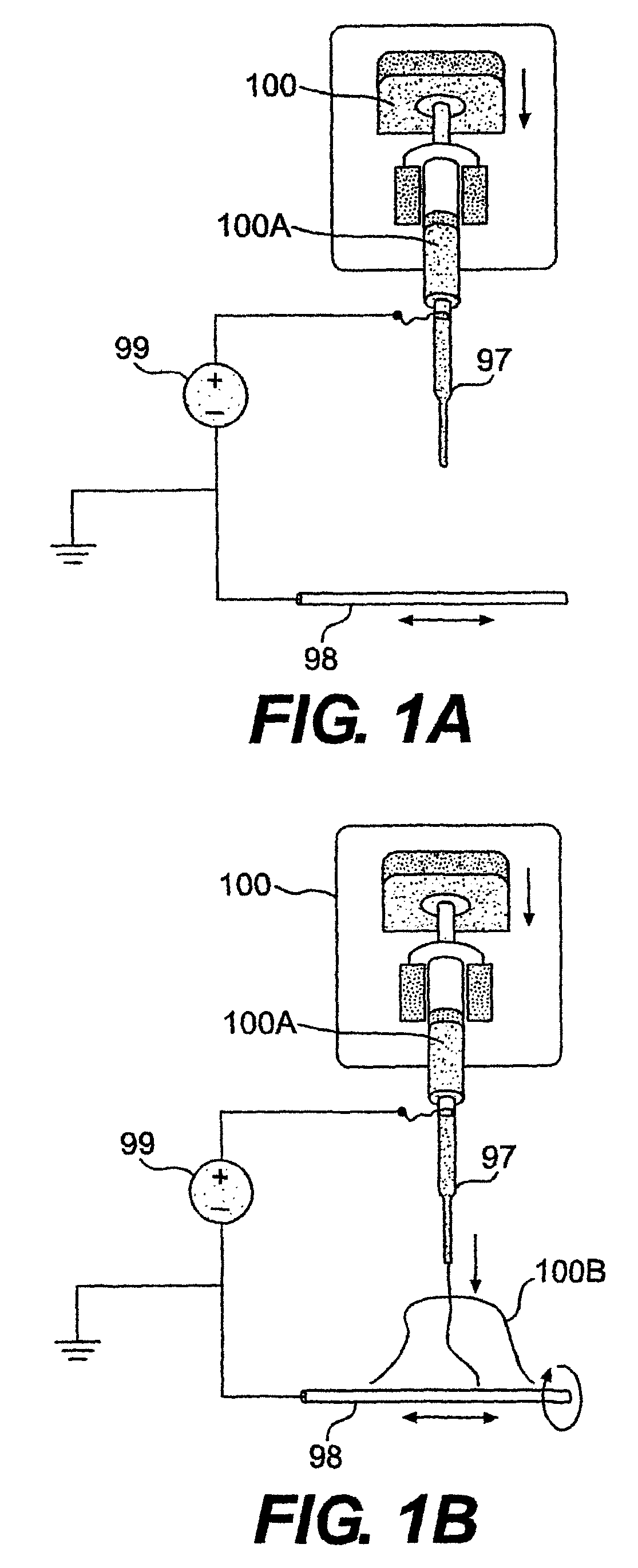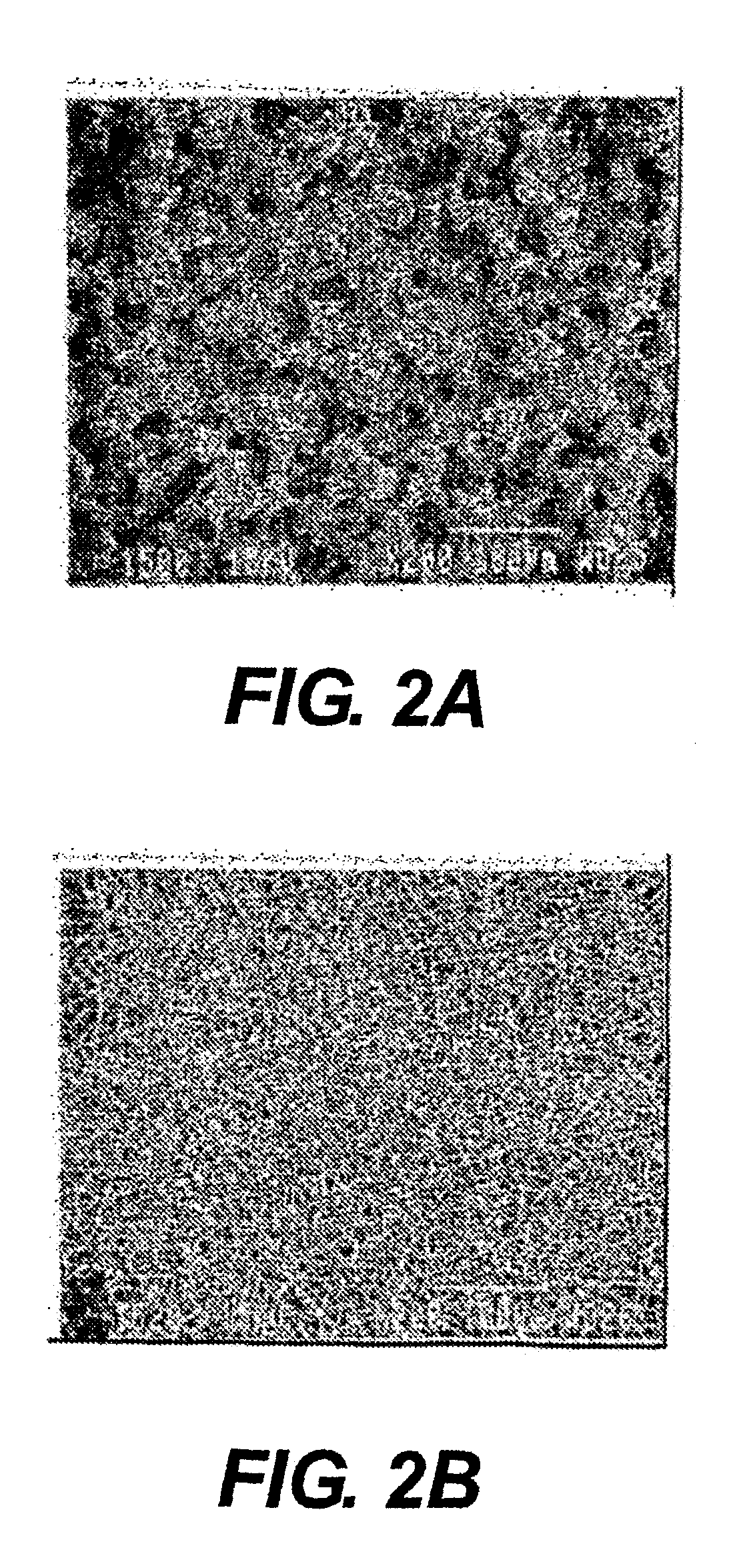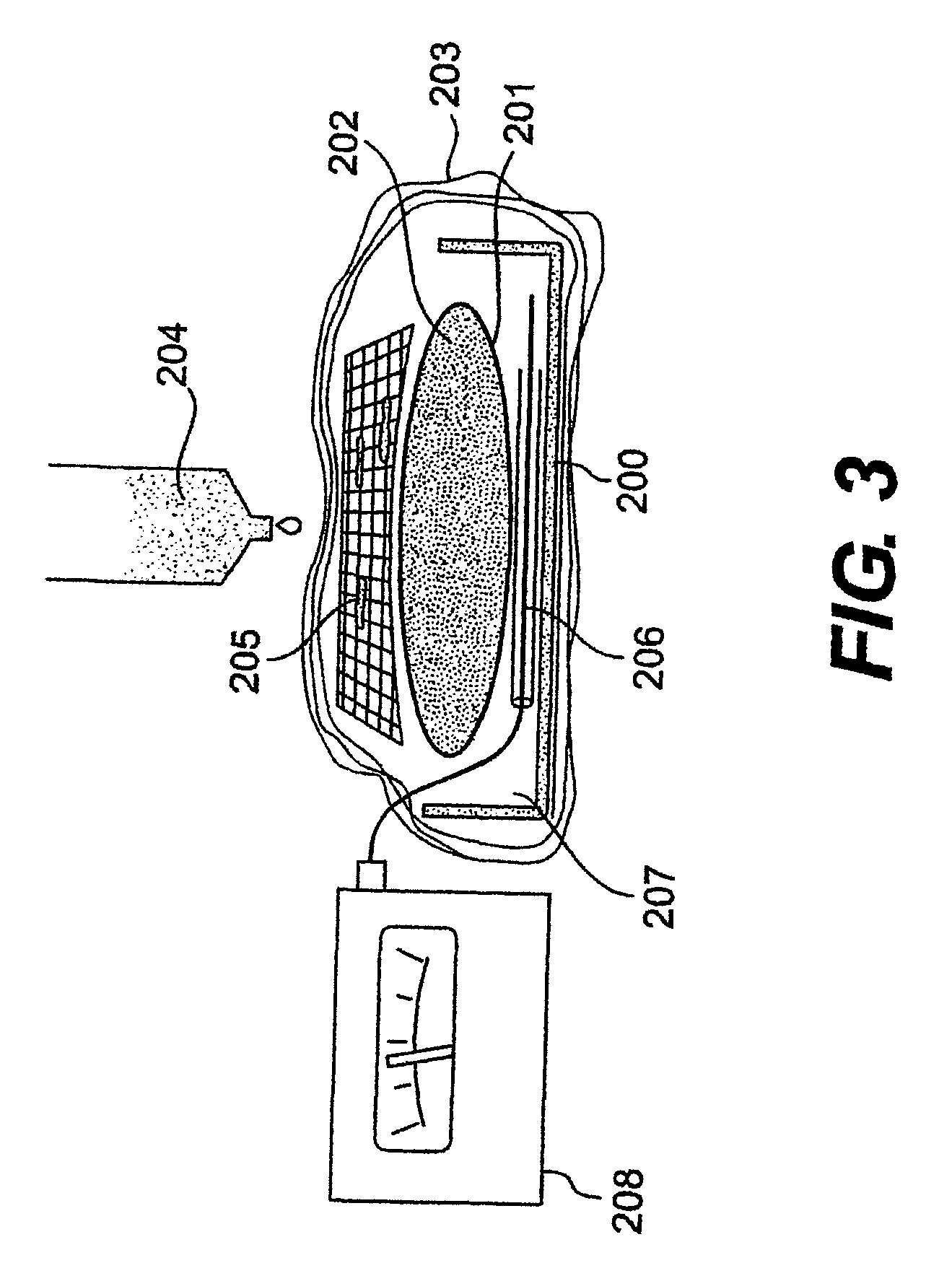Treatment for high pressure bleeding
a high-pressure, bleeding technology, applied in the field of emergency medicine, can solve the problems of unsatisfactory results, early death, limb loss, etc., and achieve the effects of low cost, low bleeding risk, and easy administration
- Summary
- Abstract
- Description
- Claims
- Application Information
AI Technical Summary
Benefits of technology
Problems solved by technology
Method used
Image
Examples
example 1a
[0085]In an example of production by electrostatic spraying (or, more simply, electrospraying), charged droplets are generated at the tip of a metal needle (or pipette with a wire immersed in the liquid) with a several kV dc field, and are subsequently delivered to a grounded target. The droplets are derived by charging a liquid typically to 5-20 kV, which leads to charge injection into the liquid from the electrode. The sign of the injected charge depends upon the polarity of the electrode; a negative electrode produces a negatively charged liquid. The charged liquid is attracted to an electrode of opposite polarity some distance away, forming a so-called Taylor cone at the needle tip. Droplets are formed when electrostatic repulsions within the liquid exceed its surface tension. If the liquid is relatively volatile, evaporation leads to shrinkage of the droplets and an increase in excess charge density, leading to break-up into smaller droplets. This can happen many times prior to...
example 1b
[0086]In an example of production by electrospinning, referring to FIGS. 1A-1B, polymer solutions or melts 100A are deposited as fibrous mats 100B (rather than droplets as in electrospraying), with the advantage taken of chain entanglements in melts or at sufficiently high polymer concentrations in solution to produce continuous fibers, such as a PEVA deposited from 15 wt % solution in chloroform (see FIG. 2B which is a microphotograph of such a fiber). See Stetzel et al, supra. Electrospinning is believed to be mechanistically similar to electrospraying, with differences being that chain entanglements yield a fiber from the Taylor cone. Moreover, rather than break-up into small droplets, entanglements lead to splaying of fibers into thinner ones, which is a particularly attractive aspect of electrospinning.
example 2a
[0087]Poly(acrylamide-co-acrylic acid copolymer was disposed in electrospun ethylene-vinyl-acetate (EVA) copolymer bags of dimensions about 6 cm by 6 cm by about 5 mm thick. The bags were exposed to water, and the bags were weighed as time progressed, with the results shown in FIG. 8A where g water / g polymer is plotted against time (minutes).
PUM
| Property | Measurement | Unit |
|---|---|---|
| pressure | aaaaa | aaaaa |
| diameter | aaaaa | aaaaa |
| pressure | aaaaa | aaaaa |
Abstract
Description
Claims
Application Information
 Login to View More
Login to View More - R&D
- Intellectual Property
- Life Sciences
- Materials
- Tech Scout
- Unparalleled Data Quality
- Higher Quality Content
- 60% Fewer Hallucinations
Browse by: Latest US Patents, China's latest patents, Technical Efficacy Thesaurus, Application Domain, Technology Topic, Popular Technical Reports.
© 2025 PatSnap. All rights reserved.Legal|Privacy policy|Modern Slavery Act Transparency Statement|Sitemap|About US| Contact US: help@patsnap.com



